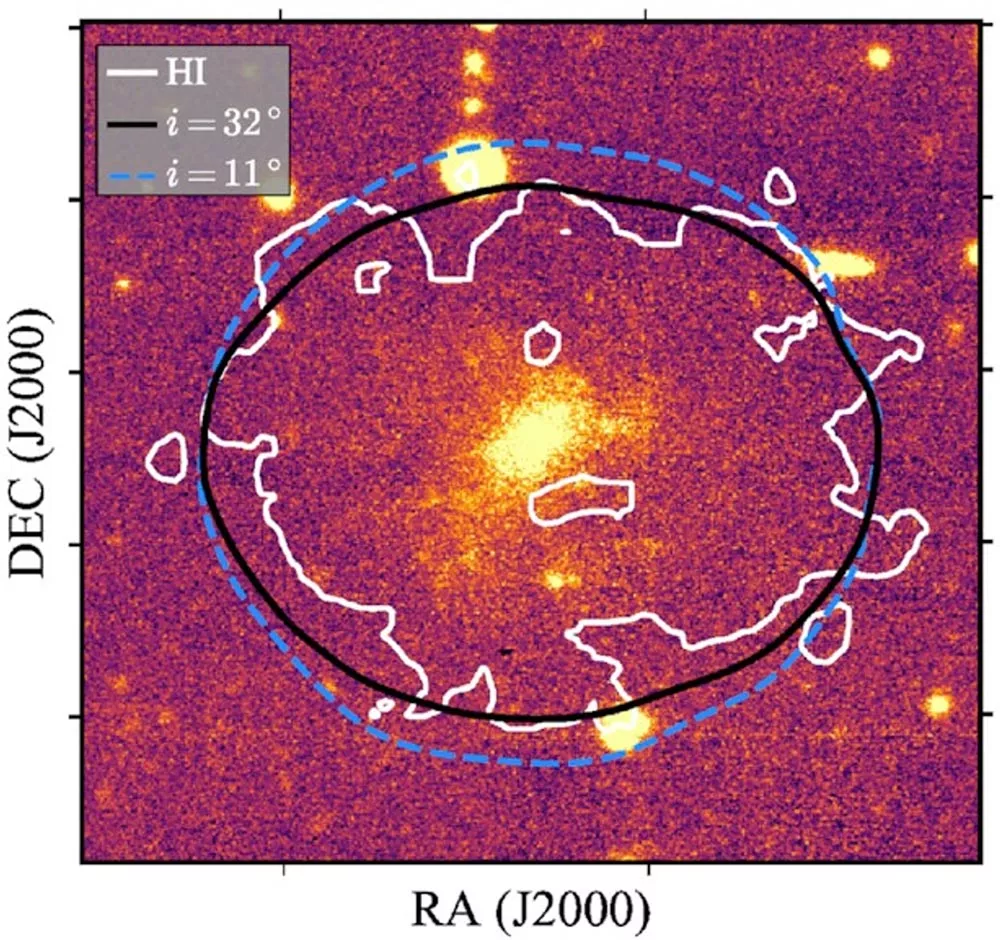The study, led by Dr. indranil Banik of the school of physics and astronomy at the University of St Andrews, revealed the high rotational speed of gas in a dwarf galaxy, which is consistent with the previously overturned theory, Milgrom dynamics (Mond) Earlier studies on the gas rotation speed of dwarf galaxy AGC 114905 (mancera Pina and other researchers) found that the gas rotation speed is very slow, so they claimed that the Mond theory has been bankrupt.
This theory is crucial to understanding our universe, because according to known physics, galaxies should fly away under centrifugal force because they rotate so fast. Mond is a controversial alternative to general relativity, a universal understanding of gravity inspired by Einstein. However, the theory of general relativity requires dark matter to fix galaxies together, while Mond does not need dark matter.
Since dark matter has never been detected despite decades of very sensitive search, various theories have been proposed to explain what holds galaxies together. There is a heated debate about which theory is correct. The very low rotational speed reported in the study of mancera Pina et al. Is inconsistent with the prediction in the universe with a large amount of dark matter dominated by general relativity.
Dr Banik's team believes that if the inclination of galaxies is overestimated, the high rotation speed predicted in Mond gravity theory is consistent with the observation results.
The rotation of stars and gas in distant galaxies cannot be measured directly. Only the part along the line of sight can be known from accurate spectral measurements. If a galaxy is viewed almost face-to-face, most of it will rotate in the plane of the sky. This may mislead observers into thinking that galaxies actually rotate very slowly, which requires them to overestimate the inclination between the disk and the sky plane. This dip is estimated based on the ellipticity of the galaxy (see picture).

This new study uses Srikanth Nagesh to conduct a detailed Mond simulation of a disk galaxy similar to AGC 114905 at the University of Bonn, and discusses this key problem under the guidance of Pavel Kroupa, a professor at the University of Bonn and Charles University in Prague. The simulation results show that it will appear elliptical even when viewed from the front. This is because the stars and gas in galaxies have gravity and can pull themselves into a somewhat non-circular shape. A similar process leads to spiral arms in disk galaxies. These features are very common, so these galaxies are usually called spiral galaxies.
Therefore, the galaxy may be closer to "facing the sea" than observers think. This may mean that the galaxy rotates much faster than reported, eliminating the contradiction with Mond.
The lead author of the new study, Dr. Banik, said. "Our simulations show that the inclination of AGC 114905 may be much smaller than reported, which will mean that the galaxy is actually much faster than people think, consistent with Mond's expectations."
Said Dr. Zhao Hongsheng of the school of physics and astronomy at St Andrews University. "The very low reported rotation speed of this galaxy is inconsistent with the standard methods of Mond and dark matter. But only Mond can bypass this obvious contradiction.".
The study also believes that a similar 'false tilt' effect is unlikely to occur in the standard dark matter method, because the galaxy is dominated by a smooth dark matter halo. Stars and gas contribute little to gravity, so the disk has no 'self gravity'.
This means that if viewed from the front, it is likely to look very round, as confirmed by a simulation conducted by another team (Sellwood & amp; Sanders, 2022). Therefore, the observed ovality must be due to the huge tilt between the disk and the sky plane. Then, the rotation speed will be very small, which means that the galaxy has very little dark matter. Considering the mass of an isolated dwarf galaxy in stars and gas, it is impossible to have so little dark matter in this framework.
Pavel Kroupa, a professor at Bonn University and Charles University in Prague, said of the broader context of these results. "Although Mond has worked well in the tests carried out so far, the standard method can cause very serious problems on all scales from dwarf galaxies such as AGC 114905 to cosmological scales, which has been found by many independent teams."